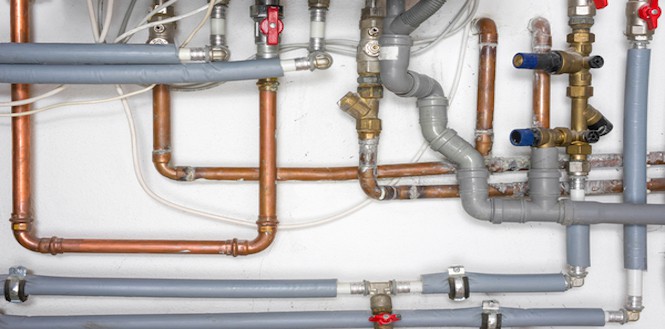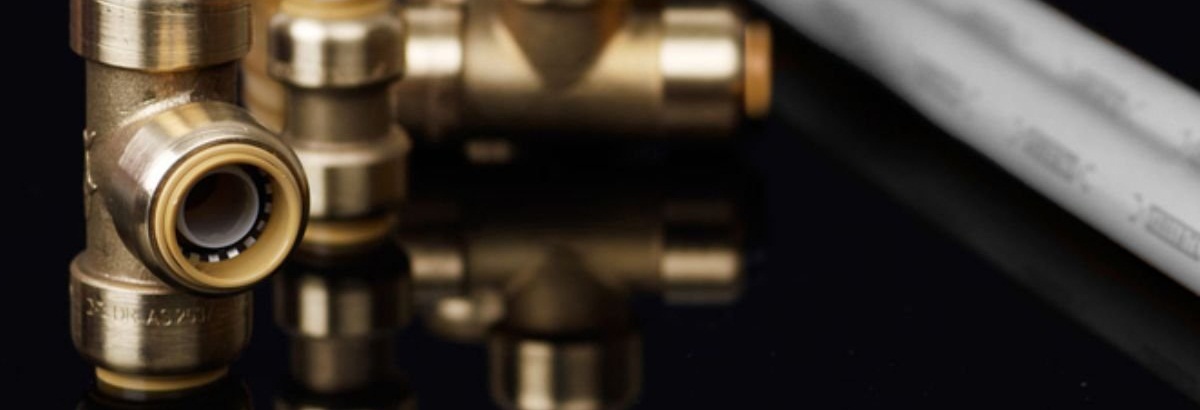An Overview to Your Home's Plumbing System Anatomy
An Overview to Your Home's Plumbing System Anatomy
Blog Article
The article further down on the subject of Plumbing Installation 101: All You Need to Know is extremely interesting. You should check it out.

Recognizing just how your home's plumbing system works is vital for every single home owner. From delivering clean water for drinking, cooking, and bathing to securely eliminating wastewater, a properly maintained pipes system is crucial for your family members's health and comfort. In this extensive guide, we'll explore the detailed network that composes your home's pipes and offer suggestions on maintenance, upgrades, and handling usual problems.
Introduction
Your home's plumbing system is greater than just a network of pipes; it's an intricate system that guarantees you have access to clean water and efficient wastewater elimination. Understanding its elements and how they work together can aid you stop costly repairs and make certain every little thing runs smoothly.
Basic Elements of a Pipes System
Pipes and Tubes
At the heart of your plumbing system are the pipes and tubing that lug water throughout your home. These can be made of various materials such as copper, PVC, or PEX, each with its benefits in regards to toughness and cost-effectiveness.
Components: Sinks, Toilets, Showers, etc.
Fixtures like sinks, bathrooms, showers, and bathtubs are where water is made use of in your house. Understanding just how these fixtures connect to the pipes system helps in detecting issues and planning upgrades.
Shutoffs and Shut-off Points
Shutoffs regulate the circulation of water in your plumbing system. Shut-off shutoffs are important during emergency situations or when you need to make repair work, allowing you to separate parts of the system without interrupting water flow to the whole home.
Water Supply System
Key Water Line
The main water line attaches your home to the community water or a personal well. It's where water enters your home and is dispersed to various components.
Water Meter and Stress Regulator
The water meter actions your water use, while a pressure regulatory authority guarantees that water flows at a secure pressure throughout your home's pipes system, preventing damages to pipes and fixtures.
Cold Water vs. Warm water Lines
Understanding the difference between cold water lines, which supply water straight from the main, and warm water lines, which lug heated water from the hot water heater, helps in fixing and preparing for upgrades.
Drainage System
Drain Pipes Piping and Traps
Drain pipes bring wastewater far from sinks, showers, and toilets to the drain or septic system. Traps avoid sewage system gases from entering your home and also trap particles that could create clogs.
Ventilation Pipelines
Air flow pipelines allow air right into the drain system, protecting against suction that could slow drain and trigger catches to vacant. Proper ventilation is crucial for maintaining the integrity of your plumbing system.
Value of Correct Drainage
Guaranteeing appropriate drain stops backups and water damage. Frequently cleaning up drains pipes and preserving catches can prevent expensive fixings and extend the life of your plumbing system.
Water Furnace
Types of Water Heaters
Hot water heater can be tankless or traditional tank-style. Tankless heating units warm water as needed, while tanks keep warmed water for prompt use.
Upgrading Your Pipes System
Factors for Updating
Upgrading to water-efficient fixtures or replacing old pipelines can boost water quality, decrease water expenses, and raise the worth of your home.
Modern Pipes Technologies and Their Benefits
Explore innovations like wise leakage detectors, water-saving commodes, and energy-efficient water heaters that can save money and minimize ecological influence.
Cost Considerations and ROI
Determine the in advance expenses versus lasting financial savings when considering pipes upgrades. Several upgrades spend for themselves via decreased utility bills and fewer fixings.
Just How Water Heaters Attach to the Plumbing System
Understanding exactly how water heaters link to both the cold water supply and hot water distribution lines assists in identifying problems like inadequate hot water or leakages.
Upkeep Tips for Water Heaters
On a regular basis flushing your water heater to remove debris, inspecting the temperature setups, and evaluating for leakages can extend its lifespan and enhance energy performance.
Typical Plumbing Problems
Leaks and Their Causes
Leaks can take place as a result of maturing pipelines, loosened fittings, or high water pressure. Resolving leakages quickly prevents water damages and mold growth.
Obstructions and Obstructions
Clogs in drains and toilets are frequently caused by purging non-flushable things or an accumulation of grease and hair. Making use of drainpipe screens and bearing in mind what goes down your drains pipes can avoid obstructions.
Indications of Plumbing Troubles to Watch For
Low tide stress, sluggish drains pipes, foul odors, or uncommonly high water bills are signs of possible plumbing problems that should be attended to without delay.
Plumbing Upkeep Tips
Regular Examinations and Checks
Set up annual pipes evaluations to capture problems early. Look for indications of leakages, rust, or mineral build-up in faucets and showerheads.
Do It Yourself Maintenance Tasks
Straightforward jobs like cleaning tap aerators, looking for toilet leakages utilizing color tablet computers, or insulating revealed pipes in chilly environments can prevent significant pipes issues.
When to Call a Specialist Plumbing Professional
Know when a plumbing problem needs specialist competence. Trying complicated repairs without appropriate knowledge can result in even more damage and higher fixing costs.
Tips for Decreasing Water Use
Simple habits like repairing leaks without delay, taking shorter showers, and running complete loads of laundry and meals can preserve water and lower your energy bills.
Eco-Friendly Pipes Options
Take into consideration sustainable plumbing materials like bamboo for floor covering, which is durable and eco-friendly, or recycled glass for countertops.
Emergency situation Preparedness
Steps to Take Throughout a Pipes Emergency situation
Know where your shut-off valves are located and exactly how to shut off the water in case of a ruptured pipe or significant leakage.
Significance of Having Emergency Situation Get In Touches With Convenient
Keep get in touch with details for local plumbing technicians or emergency situation solutions readily available for quick reaction during a plumbing dilemma.
Ecological Influence and Preservation
Water-Saving Components and Home Appliances
Mounting low-flow taps, showerheads, and toilets can considerably minimize water use without sacrificing performance.
Do It Yourself Emergency Situation Fixes (When Relevant).
Temporary repairs like utilizing air duct tape to spot a leaking pipe or placing a container under a leaking tap can decrease damages till a professional plumbing shows up.
Final thought.
Comprehending the composition of your home's pipes system equips you to preserve it successfully, conserving money and time on fixings. By adhering to normal upkeep regimens and remaining informed concerning modern-day pipes modern technologies, you can guarantee your pipes system runs successfully for several years to find.
HOW YOUR PLUMBING SYSTEM WORKS
Which Pipes Do What?
Blue lines = fresh water supply entering the building Red lines = hot water supply entering the building Grey lines = pipes carrying waste away from the building and venting pipes carrying gases away from the building (through the roof) YOUR MAIN PLUMBING SYSTEMS
There are two main plumbing systems that support your home s basic plumbing needs one that brings clean water into your home, and one that sends dirty water away from your home. Connected to the toilet, bath, shower, and other faucets in your home, these two systems keep your water flowing in the right directions.
ACCESSING FRESH WATER
Fresh and clean water is brought into your home through the main water supply line . Filtered through one pipe, this water is pressured to flow into the various fixtures in your home at any given time.
This water can be sourced from a well located on your property, a pond or river (mostly cottages), or, as in most cases, from the city s municipal water treatment centre. However, it is important to note that water that is untreated, such as the water siphoned from ponds or rivers, may not be safe to drink. Personal water supplies always need to be treated for hardness and contaminants before consumed.
MUNICIPAL WATER SUPPLIES
Improve taste and odour Remove sediment Eliminate hardness Reduce chlorine COLD WATER SUPPLY VS. HOT WATER SUPPLY
Cold water flows into your home or building through the service line, which then distributes hot or cold water to your fixtures. This line is most commonly run through a central column that runs floor to floor. Hot water runs in short and straight pipes as the longer the pipeline, the more heat that will be lost in the transfer. Having shorter pipes also allows residents to access hot water more quickly.
WASTE WATER SYSTEM
Your wastewater system is divided into two parts pipes that send wastewater away from your home and venting pipes that send sewer gas away from your home. Sewage water travels through pipes that flush the water and waste towards local sewers that are operated and managed by your city or town. Most sewer systems rely on gravity to move the wastewater to where it needs to go.
The further away from your toilet or sink, the larger wastewater pipes become. This allows for waste to be disposed of from various parts of your home or business at once without pipe blockages. The angle and flow of these pipes are also essential for keeping your waste pipes clear of build up.
https://harrisplumbing.ca/how-your-home-plumbing-system-works/

I was shown that editorial on Plumbing Installation 101: All You Need to Know from a friend on a different web page. Loved our write up? Please share it. Help others find it. I value reading our article about .
Click Here Report this page